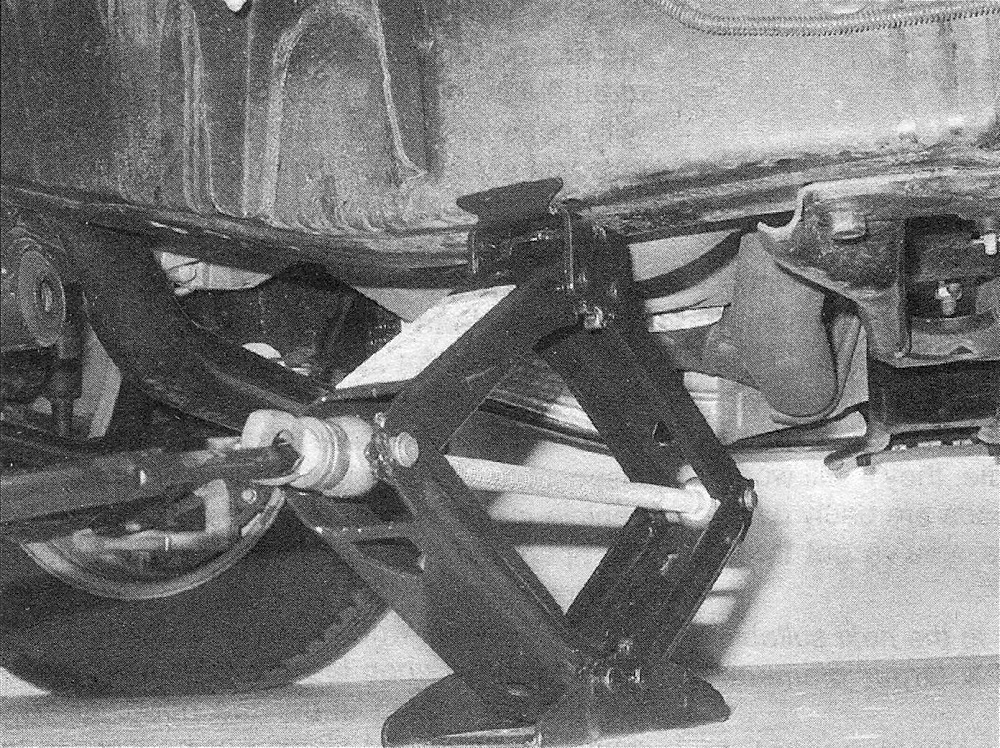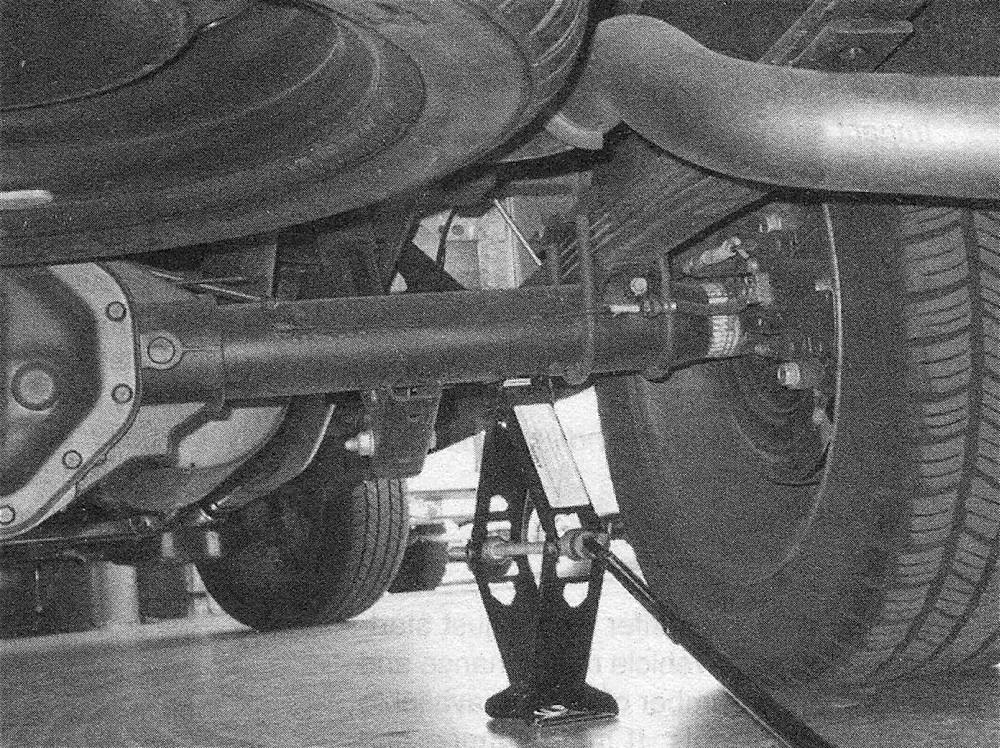Jacking and towing
Jacking
The jack supplied with the vehicle should only be used for raising the vehicle when changing a tire or placing jackstands under the frame. NEVER work under the vehicle or start the engine when the vehicle supported only by a jack.
The vehicle should be parked on level ground with the wheels blocked, the parking brake applied and the transmission in Park (automatic) or Reverse (manual). If the vehicle is parked alongside the roadway, or in any other hazardous situation, turn. on the emergency hazard flashers. If a tire is to be changed, loosen the lug nuts one-half turn before raising off the ground.
Place the jack under the vehicle in the indicated positions (see illustrations). Operate the jack with a slow, smooth motion until the wheel is raised off the ground. Remove the lug nuts, pull off the wheel, install the spare and thread the lug nuts back on with the beveled or flanged side facing in. Tighten the lug nuts snugly, lower the vehicle until some weight is on the wheel, tighten them completely in a criss-cross pattern and remove the jack. On models with dual rear wheels, it is important that the lug nuts are clean and properly lubricated. Put two drops of oil at the point where the flange portion of the nut assembly attaches to the nut itself. This will ensure consistent torque readings. Note that some spare tires are designed for temporary use only – don’t exceed the recommended speed, mileage or other restriction instructions accompanying the spare.
Towing
Equipment specifically designed for towing should be used and attached to the main structural members of the vehicle. Optional tow hooks may be attached to the frame at both ends of the vehicle; they are intended for emergency use only, such as rescuing a stranded vehicle. Do not use the tow hooks for highway towing. Stand clear when using tow straps or chains, as they could break and cause serious injury.
Safety is a major consideration when towing and all applicable state and local laws must be obeyed. In addition to a tow bar, a safety chain must be used for all towing.
Two-wheel drive vehicles with automatic transmission may be towed with four wheels on the ground for a distance of 15 miles or less, as long as the speed doesn’t exceed 30 mph. If the vehicle has to be towed more than 15 miles, place the rear wheels on a towing dolly.
Four-wheel drive vehicles should be towed on a flatbed or with all four wheels off the ground to avoid damage to the transfer case.
If any vehicle is to be towed with the front wheels on the ground and the rear wheels raised, the ignition key must be turned to the OFF position to unlock the steering column and a steering wheel clamping device designed for towing must be used or damage to the steering column lock may occur.
Front jacking point (all 1500 2WD and 4WD models)
Front jacking point, 2500/3500 2WD models – on 2500/3500 4WD models, the jack head must be placed under the front axle tube, nearest the wheel to be changed
Rear jacking point (all models)


